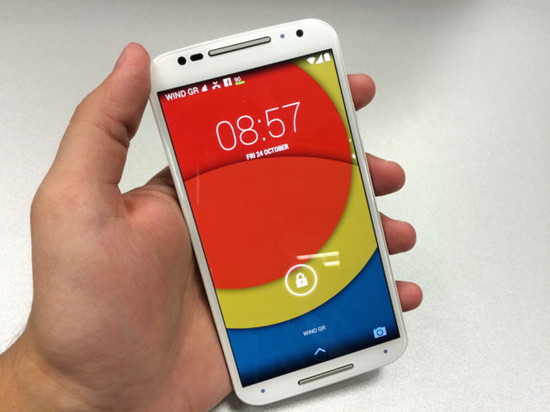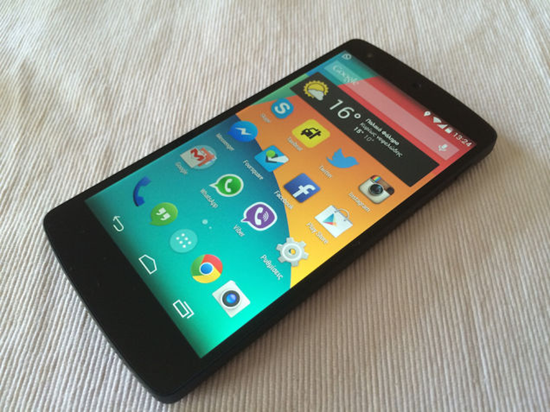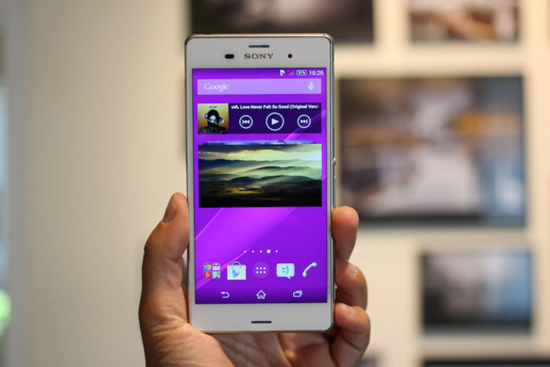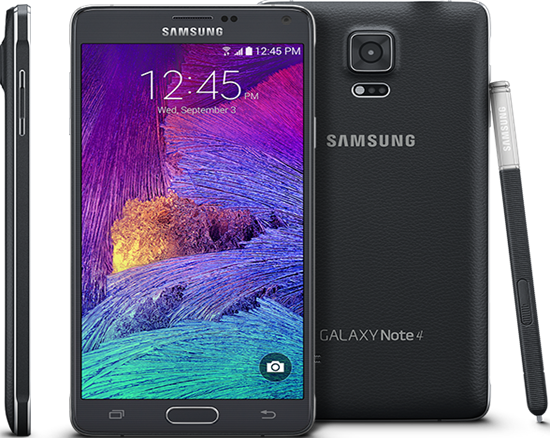
There's no shortage of great Android phones on the market if you're looking to switch, buy your first, or upgrade. Even so, there are certainly some phones that stand above others, either because they have great specs, include good software, get fast updates, or are just a joy to use. Here are five of them, based on your [readers'] nominations.
There are so many things to consider when buying an Android phone. Sure, you can run down all the standard specs and features and look for the ones with the highest numbers - processor speed, number of cores, display size, display resolution, battery capacity, all that stuff - but high scores doesn't add up to a great phone that's actually comfortable and fun to use day in and day out.
Earlier in the week, we asked you which Android phones you thought were the best this year. It's been a while since we last looked at your favourites, and even then they were a little similar to the year before that. Either way, you offered tons of great suggestions, although there were certainly some phones that rose to the top more quickly than others. Here's a look at the top five, based on your nominations, in no particular order.
1. HTC One M8
Photo: Kārlis Dambrāns
The HTC One M8 is the successor and update to last year's most popular phone, and it still brings a lot to the table to love. The One M8 is largely an improvement on its predecessor in every way, packing a 5" Super LCD3 display that 's protected by Corning Gorilla Glass3 and packs 1080px x 1920px resolution, a Qualcomm's 2.3GHz quad-core Snapdragon 801 processor under the hood, a 2600mAh battery, a micro SD slot for up to 128GB of expandable storage, 2GB of RAM on-board, and HTC's updated Ultrapixel cam on the back and a 5 MP camera on the front, 802.11 a/b/g/n/ac wireless, NFC support, Bluetooth 4.0 - you get the drive. Just about everything you would expect in a high end Android phone is under the hood here. You can read more specific specs over at GSM Arena.
The HTC One's all-metal design deserves special mention as well - even moreso than last year's version, the HTC One M8 starts off with a single block of aluminium and is machines into the chassis for its components, ditching that plastic feel that many Android phones have. The HTC One M8 also sports those two large BoomSound speakers in the front, which are some of the most powerful you'll find on just about any phone. From its sound to its build quality to its features, the One M8 is a solid, high end Android phone, one that offers a mostly stock Android experience, with HTC's Sense and BlinkFeed software in the mix, but easy to either use when you want or turn off entirely if you choose.
The HTC One M8 is available in all four major US carriers (approx US$250-US$200 depending on plan, and on contract) and available unlocked (US$650) with no strings attached. Those of you who nominated and praised the HTC One M8 highlighted its build quality, for one, explaining that it's one of the sturdiest, most high-end-feeling Android phones you've ever used. A few of you went back and forth on the issue of battery life - some of you said you wished it were better, others noted that you didn't have a problem getting more than a day or so out of the included non-replaceable battery. Some of you noted that HTC's QuickCharge technology helps you get a power boost on the go, but you need the proprietary charger for it. A few of you lamented that the Lollipop upgrade for it has been delayed, but it's still on the way. Others of you noted that it sounds terrific too, thanks to those speakers. You can read more of your own nomination praises in the nomination thread here.
2. Moto X
Photo: John Karakatsanis
The Moto X may very well have been the device that put Motorola back in the running as a leading Android phone manufacturer, and even though it's no longer a Google company (and is now in the hands of Lenovo) the original Moto X and the current, 2nd gen Moto X both launched to upbeat reviews and praise. It's not a perfect phone, but it brings a lot of high-end features, great customization options, and a pure Android experience to the market at a budget-friendly price that everyone can love. The current model of the X packs a 5.2" Super AMOLED display that's protected by Corning Gorilla Glass 3 at 1080px x 1920px resolution (a step up from the original's 4.7", 720px x 1280px display), a 2.5GHz quad-core Qualcomm Snapdragon 801, a 2300 mAh battery, 2 GB of RAM, a 13 MP camera on the back and a 2 MP camera on the front. The Moto X also sports NFC and Wi-Fi up to and including Wireless AC. You can check out the full specs for the current edition at GSM Arena here, and the original Moto X over here.
Beyond its specs though, the Moto X is well regarded for its battery-saving features, like active notifications, which only lights up the pixels on the screen required to show you a notification instead of waking your whole display, smart features that let the phone know when you're holding it, charging it, or its face down or in your pocket. The original Moto X was a modest size, and while the new one is bigger (much to the chagrin of some, who preferred the smaller screen size), it's not horribly unwieldy. Both models feature voice controls that are personalized to your voice, and make it easy to use the phone to launch apps, get messages, issue commands and reminders, and more while you're on the go, without touching the device. The X isn't the only phone that supports those notifications, of course, but it was certainly one of the first. If you like personalizing your phone, the X's rubberized, non-slip back is still available in tons of colours, various wood backings, and more. The Moto X is host to a number of unique features, and all of them are pretty great.
The Moto X is available in 16GB and 32GB flavours, and while the original is available on all US carriers, the 2014 model is available on Verizon Wireless, AT&T, US Cellular, and unlocked. (Starting at US$100 on contract, and approx US$500 unlocked.) It's available running Kit Kat, and Lollipop is coming very soon, according to Motorola. Those of you who nominated it (full disclosure, I nominated it) noted that it may not have the highest-of-the-high end specs, but it's a perfect example of a phone that can not hit the top of the charts but have other features that make it a compelling buy. Its near-stock Android experience, voice commands and Moto-exclusive features like Assist and Migrate (not to mention the gestures, like shake-to-launch-camera) make it a great phone in general, and its bright display, great battery life, and solid build quality are more pluses in its favour. You can read more in its nomination thread here.
We should also note that the Moto G by Motorola also earned a number of nominations, enough that it could have made the top five, but in the interest in variety, we opted to mention it here - after all the Moto G is an affordable, slightly lower-end version of the X, with a few of the X's flagship features pulled off. It has the power where it counts though - it may not be a super-high-end phone, but it's more than powerful enough to get the job done, and is super affordable, especially for people not interested in contracts. Check out its nomination threads here and here.
3. Nexus 5
Photo: John Karakatsanis
The Nexus 5, manufactured by LG, is the previous generation Google Phone - it may be surpassed by the newly released Nexus 6 by Motorola, but it wasn't the 6 that earned your nominations (although the 6 did get a fair number of nominations on its own.) The Nexus 5 hit the sweet spot for a lot of people, and since Lollipop is already available for it, many of you are already running Google's latest mobile operating system. The Nexus 5 packs a 5" (4.95" to be exact) True HD IPS+ display, protected by Corning Gorilla Glass 3 at 1080px x 1920px resolution. It has a 2.3 GHz quad-core Snapdragon 800 processor under the hood, 2 GB RAM, a 2300 mAh battery, an 8 MP camera on the back, and a 1.3 MP camera on the front. Like any other high-end Android phone, it packs NFC, Wireless up to and including Wireless AC, and more. You can read more of its specs at GSM Arena here.
The Nexus 5 may be a little over a year old, but when it launched it got great reviews, and since the Nexus 6 is still relatively new, the 5 is a great and affordable option for people who want a pure Android experience in an unlocked, hackable device. I have a Nexus 5, and the screen is big and bright, the camera is solid, and it runs Lollipop smoothly with no issues. Its sound is definitely on the weak side (with my older Moto X sounding much better), but it's fast, customizable, offers pure Android, and is hackable if you want to get your ROMs on.
The Nexus 5 is available in 16GB and 32GB flavours, on all of the major US carriers with the sole exception of Verizon Wireless, and unlocked directly from Google. (On-contract price will vary by carrier, but at this point it's close to US$100, unlocked you'll pay US$349 or US$399 for the 32GB and 64GB models respectively.) If you shop second-hand (like I did), you can find even deeper bargains. Those of you who nominated the Nexus 5 praised it for being a value buy at this stage, offering fast, powerful hardware at a mid-range phone's price, and free of bloatware from carriers. Google does support Nexus phones, and while it ships with Kit Kat, upgrading to Lollipop is a simple matter. Some of your griped about the N5's battery life, others of you mentioned that it's on the way out now that the N6 is a thing, but more of you praised it for being a great, hackable piece of hardware that still performs strong and is super fast. Read more in its nomination thread here.
4. Sony Xperia Z3
Photo: Maurizio Pesce
The Sony Xperia Z3 is a brilliant Android phone that comes in a couple of sizes. The Z3 Compact earned high praise from Gizmodo and from many of you for being an Android powerhouse without being a huge, pocket-bursting phone like we've seen so many of recently. The Z3 Compact features a 4.6" LCD IPS display at 720px x 1280px, a 2600 mAh battery, a 2.5Ghz quad-core Qualcomm Snapdragon 801 under the hood, 2 GB of RAM, 16GB of internal storage, and a whopping 20.7 MP camera on the rear and a 2.2 MP camera on the front. That's a lot in a tiny package, especially considering it's getting Lollipop in the near future. The larger Z3, which comes in a Z3v variant for Verizon Wireless and a Z3 for everyone else, packs a 5.2" display at 1080px x 1920px, a micro SD card slot for up to 128GB additional storage, 3 GB RAM, the same quad-core processor inside, a 3100 mAh battery, and the same powerful camera on-board. Both models pack Wi-Fi up through and including Wireless AC, NFC, and more. Check out the Z3 Compact's specs here at GSM Arena, the regular Z3 over here, and the Verizon variant here.
Considering previous years' roundups have been devoid of Sony phones mostly only because they're difficult to obtain in North America - especially flagship phones - the inclusion of the Z3 is a welcome change. It's more than worth the slot, too - the Z3 (and its predecessor, the Z2) is a great device. The Verizon Wireless variant offers wireless charging and a few design tweaks, but beyond that the differences are minimal. The X3's camera really stands out as well, and it offers a speedy, near-stock Android experience that Sony fans have known and loved for years. It doesn't hurt that Sony's Xperia line is generally waterproof (or at least extremely water-resistant) and dust slides right off the chassis.
The Xperia Z3 is available for T-Mobile and Verizon Wireless (Z3v) at about US$200 on contract, and around US$600 unlocked SIM free. The Z3 Compact will set you back US$530 unlocked to take to your preferred carrier. Those of you who nominated the Z3 called out its waterproof, dust-proof chassis, the expandable storage which seems to be all too uncommon these days, even the built-in equalizer earned specific praise from at least one of you. A few of you mentioned that the Z3 can get a little warm, but almost all of you had good things to say. Some of you called out the Compact specifically for offering a great form factor without compromising on the innards or the camera that the Z3 features. You can read more in its nomination thread here.
5. OnePlus One
Photo: Gizmodo
The OnePlus One was designed to be an Android phone with flagship specs from an independent team. Think of it as an Android phone made by and for Android fans, at a rock-bottom, unlocked, and carrier-free price. The OnePlus One certainly delivers, and earned incredible praise from our friends at Gizmodo. It's the first phone to run CyanogenMod out of the gate, having been built with it in mind, packs a 5.5" LTPS LCD display that's protected by Corning Gorilla Glass 3 and comes in at 1080px x 1920px, a 2.5 GHz quad-core Snapdragon 801 processor, 3 GB RAM, a 13 MP camera on the rear with a 5 MP camera on the front, a 3100 mAh battery, and a ton of custom features designed specifically to integrate CyanogenMod with the OnePlus One. That's not to say that it doesn't bring the best of Android to the fore either - CyanogenMod is a killer ROM, and offers more features than you probably get with stock Android, and certainly more than you'll get with a carrier-specific ROM. You can read more about the OnePlus One's hardware over here at GSM Arena.
The beauty of the OnePlus One is that it's designed to run CyanogenMod, but it's also designed to be tweaked and hacked by its users. The phone started as an invite-only kind of thing, and there are still invites floating around (before you ask, I don't have any), but the team behind it has moved to a pre-order system where you can get in line to purchase yours and they'll get to you in turn. They process pre-orders in batches though, so it may be a while. The device itself is a joy to use, complete with a textured back and tons of pre-built gestures for quick commands like turning on the flash as a flashlight, opening the camera, and more - not to mention the power of Google Now rolled in as well. All in all, it's a well-polished piece of tech that'll please Android enthusiasts and hardware lovers alike - as soon as you can get your hands on one.
The OnePlus One is available in 16GB (white) and 64GB (black) versions, at US$300 and US$350 - extremely well priced for such high-end hardware. It's GSM-only and comes unlocked, which means you can bring it to T-Mobile or AT&T (or any pre-paid carrier or MVNO that rides their network and accepts it) and activate it. Many of you noted that it may be slowly outpaced by more recent releases, but it's still an amazing device, well crafted with great software, and while the invite-only/batch pre-order scarcity is a pain, it's hard to understate how exciting it is to have a device like this on the market and support it. It's customizable, it's well built and well designed, and it's affordable while being completely unlocked. You can read more in this glowing nomination thread here.
Honourable Mention: Droid Turbo
Photo: Motorola
This week's honourable mention goes out to the newly released Droid Turbo on Verizon Wireless, which is, in many ways, a supercharged Moto X crossed with a Nexus 6. It's a high-end phone, to be sure, packing top-of-the-line specs everywhere from processor to battery life, and a textured nylon back that's well built and well designed. Verizon Wireless users should definitely consider it, and those of you who supported its nomination highlighted its battery life, custom gestures, and more. Check it out in its nomination thread here.
Honourable Mention: Galaxy Note 4
Photo: Samsung
The other honourable mention we should highlight goes to a company we're surprised didn't earn more nominations from you, Samsung - specifically the Galaxy Note 4. We were surprised more Samsung devices didn't earn your nominations (the Galaxy Note 4 and its predecessor, the Note 3, were the only ones to get nominated at all), but the new Note earned your praise thanks to its 5.7" display, its great daylight and direct-light performance, among other things. You can read more about it in its nomination thread here.







No comments:
Post a Comment
Please adhere to proper blog etiquette when posting your comments. This blog owner will exercise his absolution discretion in allowing or rejecting any comments that are deemed seditious, defamatory, libelous, racist, vulgar, insulting, and other remarks that exhibit similar characteristics. If you insist on using anonymous comments, please write your name or other IDs at the end of your message.